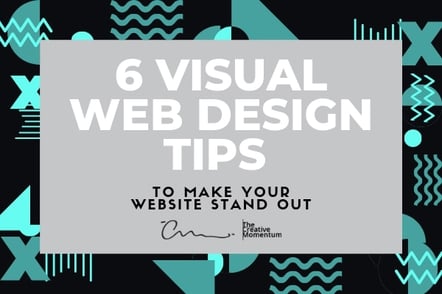
Making a website stand out is an ongoing challenge for web designers. Design trends shift, evolve, and fade away—creating plenty of confusion about which trends actually work and which are remnants of a bygone era. To help clear things up, let’s review a few current web design trends that can help give your site a visual punch.
1. Storytelling
One of the best ways to create a memorable web design experience is to engage readers through a time-tested strategy: storytelling.
Look at Audible’s about page for a classic example of how a brand can tell its story through visual design. All the hallmarks are there: a structured visual hierarchy of headlines and content that guide the reader’s journey, personal copy that describes the company’s roots, and high-impact visuals that show off the brand’s polished image. It’s simple enough to set up a page like this from a design standpoint, but certain websites can take this concept even further.
Just look at the way Emergence Magazine outlines the details of the Shikoku Pilgrimage. It’s storytelling in the truest sense; every aspect of the site design, from the navigation to the content to scroll-triggered animations are designed to support the story being told. It’s an extreme example—but you can find a middle ground between these two cases and come up with a unique story that fits within your established site design.
2. Retro Style
Retro styles are hot these days. Maybe we’re nostalgic for an earlier time, or maybe we’re just tired of the typical design trends that are littering the web, but either way, brands can make a statement by taking an old-fashioned approach to their web design. This often comes in the form of retro-inspired logos, typography, and vintage photos, but you could also take it further by reimaging your entire web experience to cater to this retro nostalgia. Look at the website of French musician Mr. Oizo for a good example. This bizarre approach wouldn’t work for many brands—but for creative types, it works great as a distinctive and bold style.
But be careful about getting too wild, here. For example, Adidas took a retro approach for one of its product lines, with less than stellar results. They were going for a 90’s throwback from the Geocities era, but in this case, their over-the-top design choices make it hard to navigate around the site. Here, they’ve sacrificed function for form—a risky move for any website.
3. Full Screen Video
Video content is a given these days, but we’ve seen more brands taking it to the next level with large, full-screen video on their home page and landing pages. It’s not hard to see why. Video content is one of the best tools in the visual web design arsenal, with proponents claiming that the right landing page video can increase conversion rates by 80%.
But not just any video will do the trick. Put some thought into how you set this up. Will the video autoplay or click-to-play? Where will you place your video CTA? What’s the optimal video length to keep users on-site without overstaying your welcome? Keep these issues in mind and realize that including video is only the first step—the process of testing, refinement, and optimization comes after.
4. Maximalism
And on the subject of going big, we have maximalism. Maximalism in web design is the counter to minimalism; it’s a style that throws simplicity out the window and pushes bright, contrasting colors, jarring layouts, and in-your-face imagery. It’s an aggressive style that works best for fresh, hip brands that aren’t afraid to make bold statements. Maximalism has already taken off in 2019, but we expect to see it gain even more steam over the coming years as more brands move away from the “best practices” standards of minimalism and get more creative with their design choices.
5. Outlandish Typography
This could be considered an extension of maximalism, but it stands on its own as an emerging trend. Brands are moving away from the small and dignified and experimenting with bold typography, outlandish themes, and huge text blocks that smash the paint-by-numbers boundaries that so many websites fall into. Look at the website Milkshake for a great example. Rather than adhering to traditional web design logic of simplicity, the site opts for a wilder approach that leverages bold typography to create innovative, eye-catching designs.
Of course, as we noted above, you’ll need to be careful about going too far with these styles. Typography choices can influence how easily your site is to navigate. But if you approach the process with care and make sure your UX isn’t compromised by your design choices, this can be a great way to help your brand stand out.
6. Monochromatic Design
Experimenting with color is another great way to help your website stand out. This is particularly true for stark color schemes, such as those monochromatic designs that use only one color on the page. (Not counting the black/white neutrals.) Check out the Australian Bureau of Works website for a good example. While the website overall does feature other colors, the crucial home page uses an explosion of red to create a powerful and bold presence. They even incorporated images into their color scheme, applying a smooth red tint to their photos that helps them integrate seamlessly with the overall layout.
Let Your Visual Design Stand Out
Most of these trends speak to an emerging goal in web design: not being afraid to stand out! Many brands are so concerned about “fitting in” with established best practices that they’re afraid to take chances in their design. But in most cases, the best visual web design relies on bold choices, innovation, and creativity. Keep these issues in mind and don’t be afraid to let your brand image shine through.


